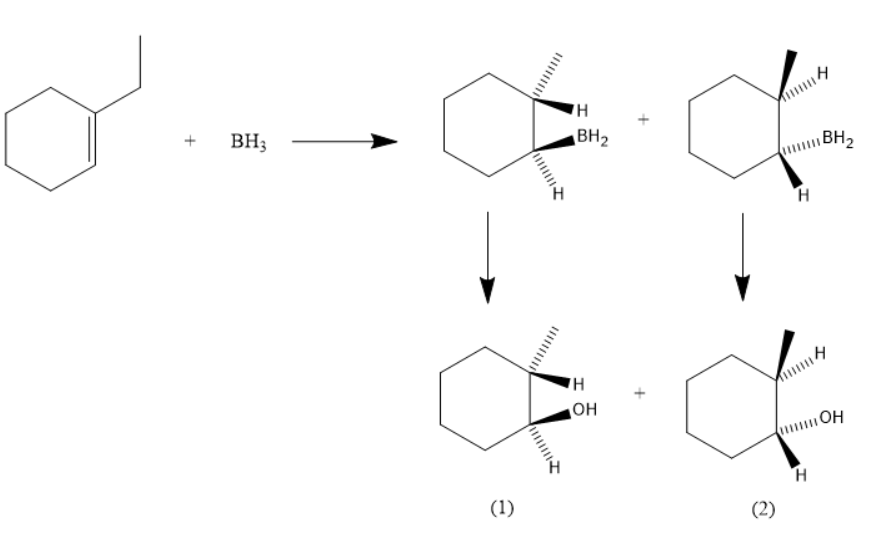
What stereoisomers are obtained from hydroboration-oxidation of
Answer
401.7k+ views
Hint:
Complete answer:
Stereoisomers are the chemical compounds that contain the same molecular formula, but there is a difference of direction of arrangement of atoms or groups in the molecule.
Later this alkyl boranes when treated with hydrogen peroxide which is an oxidation reaction leads to the formation of alcohols as
The hydroboration-oxidation of

Though the formed two products are with the same molecular formula, there is a difference in the arrangement of groups that leads to the formation of stereoisomers.
The product
The product
Note:
The overall reaction favours the anti-markovnikov's rule as the hydroxide group is attached to the carbon containing more number of hydrogen atoms. The addition of borane favours the syn-addition as both
Complete answer:
Stereoisomers are the chemical compounds that contain the same molecular formula, but there is a difference of direction of arrangement of atoms or groups in the molecule.
Later this alkyl boranes when treated with hydrogen peroxide which is an oxidation reaction leads to the formation of alcohols as
The hydroboration-oxidation of

Though the formed two products are with the same molecular formula, there is a difference in the arrangement of groups that leads to the formation of stereoisomers.
The product
The product
Note:
The overall reaction favours the anti-markovnikov's rule as the hydroxide group is attached to the carbon containing more number of hydrogen atoms. The addition of borane favours the syn-addition as both
Recently Updated Pages
Master Class 11 Economics: Engaging Questions & Answers for Success

Master Class 11 Business Studies: Engaging Questions & Answers for Success

Master Class 11 Accountancy: Engaging Questions & Answers for Success

Master Class 11 English: Engaging Questions & Answers for Success

Master Class 11 Computer Science: Engaging Questions & Answers for Success

Master Class 11 Maths: Engaging Questions & Answers for Success

Trending doubts
State and prove Bernoullis theorem class 11 physics CBSE

1 ton equals to A 100 kg B 1000 kg C 10 kg D 10000 class 11 physics CBSE

State the laws of reflection of light

One Metric ton is equal to kg A 10000 B 1000 C 100 class 11 physics CBSE

Difference Between Prokaryotic Cells and Eukaryotic Cells

1 Quintal is equal to a 110 kg b 10 kg c 100kg d 1000 class 11 physics CBSE




